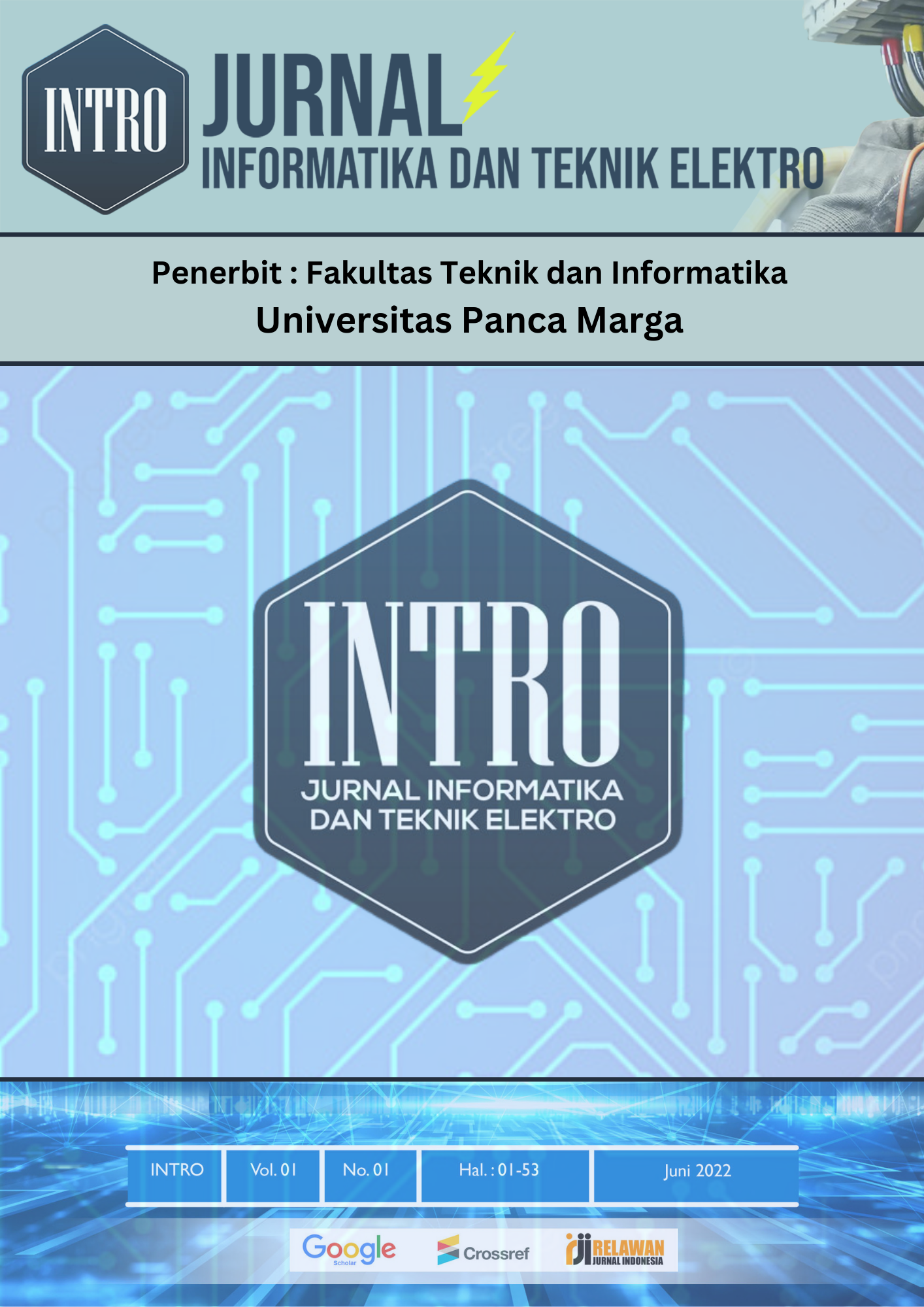Tinjauan dan Implementasi Sistem Monitoring Solar Cell Berbasis Solar Tracking di Lingkungan Universitas Panca Marga
DOI:
https://doi.org/10.51747/intro.v2i1.215Keywords:
Pelacakan Surya, Energi Terbarukan, Sel Surya, Pemantauan Tegangan, Pemantauan ArusAbstract
The sun is one of the stars that provides numerous benefits for the sustainability of living organisms, including being a source of renewable energy. One of the applications of solar energy is its conversion into electrical energy using solar cells. However, most currently used solar cells are static, leading to sub optimal solar energy absorption. To enhance energy absorption efficiency, a mechanical system capable of tracking the sun's movement, known as solar tracking, is required. This research presents the design and implementation of an Arduino Uno-based solar tracking system to optimize the performance of solar cells. The system utilizes a Light Dependent Resistor (LDR) sensor and an INA219 module to monitor the voltage and current output of the 20 WP solar cell. The obtained data is processed by the Arduino Uno microcontroller and displayed in tabular and graphical forms using the PLX-DAQ application. Experimental results show that the implementation of solar tracking improves the solar cell's output, achieving a voltage of 19.87 V, a current of 0.37 A, and a power output of 7.35 Watts. These findings demonstrate that solar tracking enhances the energy efficiency of solar cells, providing a viable solution for harnessing solar energy more optimally. The research contributes to the advancement of renewable energy technology and more effective monitoring systems.
Downloads
Published
Issue
Section
License
Copyright (c) 2023 INTRO : Journal Informatika dan Teknik Elektro

This work is licensed under a Creative Commons Attribution-NonCommercial 4.0 International License.













